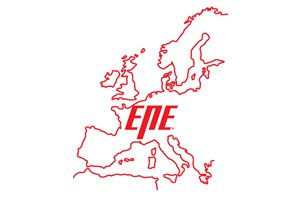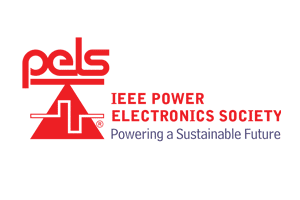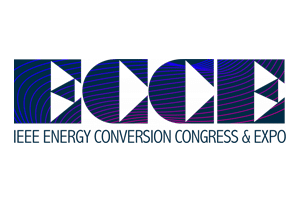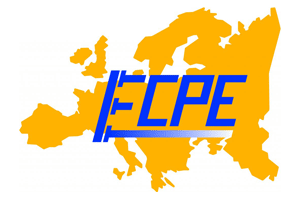The following tutorials are planned for Monday 4 September 2023 during the afternoon:
(Provisional Programme)
TUTORIAL N° 01
Afternoon
(14:00 – 17:30)
Focus Topic 2
Energy Islands
Focus Topic 3
Energy-storage Technologies
Focus Topic 4
Electric Vehicles
Room: 1.05 Møllen
Second-Life EV Batteries for Renewable and Smart Grid Storage Applications
- Chris MI, San Diego State University, United States
The objective of this tutorial is to holistically look at the issues and solutions related to using second-life EV batteries in renewable energy and smart grid application.
The number of electric vehicles (EVs) on roads is growing rapidly. EV batteries today, almost exclusively lithium-ion based, can last about 10 years before they can no longer provide the required performance such as power and range. They cost heavily in both production and recycling. So economically dealing with retired EV batteries is an important topic. It is estimated that the first huge wave of EV battery retirement will hit in 2025, and more retired batteries will be available each year thereafter.
On the other hand, renewable energy, such as solar photovoltaic (PV) and wind, also enjoy a high rate of penetration. To buffer the volatile nature of the energy output of renewable energy systems, battery energy storage systems (BESSs) are frequently incorporated to balance out the variability in power generation, efficiently manage the dynamics of demand and supply, mitigate the potential failure of the grid due to over generation, provide power during a power outage, and enable cost savings by shifting the peak use and reduce demand charge. However, the high cost of new batteries in renewable and grid storage systems is a major concern for potential home and business owners.
Batteries in EVs degrade gradually over the lifetime of the vehicle and will reach the point that it is no longer able to provide the required performance, such as range and acceleration. Second-life EV batteries include not only the batteries that are discarded from EVs due to degraded conditions; but also in-warranty replacements; road accidents; test vehicle batteries; and unsold batteries. Second-life EV batteries, though no longer roadworthy in the vehicle, still have considerable capacity for renewable energy and smart grid applications where the requirement for energy and power density is not as stringent in vehicles. The use of second-life EV batteries in grid BESS extends the life cycle of batteries after their first life in EVs, improves the environment, reduces EV ownership cost by selling them for second-life use, and reduces the cost of BESS in renewable energy systems.
However, there are a number of barriers to overcome in the deployment of second-life EV batteries, including how to properly remove them from vehicles, transport, store, test, and select second-life batteries for storage applications; how to quickly, and accurately identify the battery health conditions of every cell before and after deployment in grid storage; how to dynamically manage them so as to minimize degradation and optimize usage; and how to meet various standards related to fire hazardous mitigation/prevention, certification, permit, and safety.
This tutorial will holistically look at these issues and address how second-life EV batteries can be used in renewable energy and smart grid applications. The tutorial will include storage system design, battery management, battery balancing, size optimization, and system control and optimization for demand charge management and peak shaving. It will also look at the various testing requirements for identifying the conditions of used EV batteries. The aging mechanism of second-life EV batteries will be presented. Various topologies for storage applications, as well as safety and permit-related issues, will also be discussed.
Tutorial 01: INFORMATION FILE
TUTORIAL N° 02
Afternoon
(14:00 – 17:30)
Focus Topic 2
Energy Islands
Room: 1.09 Vaerket
Recent Advancements on High-Power DC/DC Converters for DC Transmission and Distribution
- Binbin LI, Harbin Institute of Technology, China
- Yingzong JIAO, Harbin Institute of Technology, China
- Shenghui CUI, Seoul National University, South Korea
With the increased penetration of renewable energy sources and ubiquitous power electronics apparatus, DC power is making a comeback. In the generation aspect, the PV, wind, and energy storage are inherently DC sources. For transmission, the HVDC has become the feasible solution for transmitting a large amount of power over long distance or submarine/underground cables. For distribution, the MVDC is more capable of accommodating a higher penetration of renewable energy and friendly to EV charging stations. Therefore, DC grid is of increasing interests in both academics and industries.
Nevertheless, as an analogy of line-frequency transformers in AC systems, DC grids also require such a device to exchange power between networks with different voltage levels. As a DC circuit does not satisfy the law of Electromagnetic Induction, it is not possible to use magnetic transformers to convert DC voltage directly without engagement of power electronics technology. Although the DC/DC power-electronic converters have been widely studied and applied at low-power applications and a myriad of topologies have been proposed, most of these topologies are not readily scaled up to tens/hundreds of kilovolts and megawatt power ranges, due to the limitations of loss, cost, dv/dt, and ratings of the semiconductors. To overcome these limitations, several novel high-power DC/DC converter topologies have been proposed and demonstrated during the last few years. This tutorial will give a systematic review of the latest development in this field. The tutorial will start with an introduction of the applications for high-power DC/DC converters, which is followed by a review of the basics and some widely used converter solutions in this field. Then the first theme is discussion of DC/DC converters for interconnecting LVDC and MVDC systems, including a ±10kV/±375V 1.5MW solid-state transformer, bipolar/multi-port LVDC distribution, and PV/wind DC collection. The second theme is DC/DC converters for MVDC and HVDC interconnection, which presents a novel converter solution combining the techniques of IGCT-based two-level converter and the MMC, and the converter is further improved for application of all DC offshore wind farms. Furthermore, the third theme will focus on the DC/DC conversion which interconnects HVDC systems with different voltage levels. Particularly, the capacitive energy transfer (CET) principle based DC/DC converters are discussed, which includes a series of new topologies, showing very attractive features of low cost, high efficiency, small footprint, and DC fault-blocking capability. Finally, a summary and outlook are provided. In this tutorial, all these converters and corresponding operation techniques will be explained with simulation and experimental results.
Tutorial 02: INFORMATION FILE
TUTORIAL N° 06
Afternoon
(14:00 – 17:30)
Room: 1.01 Banen
Switching Loss Measurements in Power Semiconductors
- Sebastian SPRUNCK, Fraunhofer Institute for Energy Economics and Energy System Technology IEE, Kassel, Germany
- Marco JUNG, Bonn-Rhein-Sieg University of Applied Sciences & Fraunhofer IEE, Sankt Augustin, Germany
- Christian LOTTIS, Bonn-Rhein-Sieg University of Applied Sciences, Sankt Augustin, Germany
After providing a brief overview over the operation principle of Double Pulse Tests (DPT), this tutorial highlights the influence of the applied sensing equipment on the measurement. We investigate side effects of current and voltage probes on the Device under Test and provide possible solutions to get better results when characterising fast-switching Wide Band Gap (WBG) power semiconductors. The limits for the DPT method and estimates regarding the accuracy and applicability of the measurement principle are derived as well.
Tutorial 06: INFORMATION FILE
TUTORIAL N° 20
Afternoon
(14:00 – 17:30)
Focus Topic 4
Electric Vehicles
and
Focus Topic 6
Reliability and Artificial Intelligence
in Power Electronics
Room: 1.04 Fakultetet
Reliability and Prognostics Towards Lifetime Improvement of Automotive Power Electronics
- Sajib CHAKRABORTY, MOBI- EPOWERS Research Group, Vrije Universiteit Brussel (VUB), Brussels, Belgium
- Omar HEGAZY, MOBI- EPOWERS Research Group, Vrije Universiteit Brussel (VUB), Brussels, Belgium
- Jan ALBRECHT, Fraunhofer Institute for Electronic Nano Systems ENAS & TU Chemnitz, Center for Microtechnology (ZfM), Chemnitz, Germany
- Alexander OTTO, Fraunhofer Institute for Electronic Nano Systems ENAS & TU Chemnitz, Center for Microtechnology (ZfM), Chemnitz, Germany
The requirement for clean and sustainable energy is one of the most crucial challenges confronting the European Union (EU) today. The EU has announced its intention to make Europe the world’s first climate-neutral continent by 2050. To achieve this ambitious goal, the EU declares manufacturing 100% zero-emission cars within 2035. The fulfillment of the objective hugely depends on sustainable growth and demand for electric vehicles (EVs). However, EV customers are still anxious about the safety and lifetime of EVs, which is the primary hindrance to the widespread adoption of EVs. Therefore, to fulfill the safety and lifetime requirements in one-hand automotive original equipment manufacturers (OEMs) and EV components developers are looking for accurate and trustworthy estimation of the reliability of drivetrain components since accurate lifetime model of wide-bandgap (WBG) devices (i.e., SiC and GaN) are not yet mature. In addition, a universal lifetime model is also required to standardize the lifetime requirements and target. On the other hand, real-time prognostics and health monitoring (PHM) are being deployed to satisfy the service target lifetime and accomplish a longer lifetime. Nowadays, the advancement of sensorics and Industrial Internet of Things (IIoT) devices and network technologies enable intelligent edge monitoring to estimate remaining useful lifetime (RUL) in real-time and data-streaming to the cloud. The cloud leverages data from multiple EVs, forms big data analytics and machine-learning-based model, and takes necessary steps to enhance lifetime. However, the common technological barrier is that transmitting and storing all high-frequency signals is unrealistic: it is expensive at best, and more likely practically infeasible.
To this end, this tutorial aims to present several aspects and concepts regarding the lifetime modeling approach and PHM techniques to enable lifetime improvement of the e-drivetrain components while reducing headroom by lowering the derating of the devices. This tutorial will begin with a general overview of the e-drivetrain and its future prospects for integrated drivetrain converters. The tutorial will cover three different themes. Theme 1 will focus on standard reliability tests and their associated failure mechanisms. In addition, theme 1 will also address automotive mission profiles and the interpretation of test data for lifetime models. Theme 2 will present the approach toward developing a universal lifetime model. Theme 3 will focus on real-time PHM techniques and show a case-study result.
Tutorial 20: INFORMATION FILE
TUTORIAL N° 24
Afternoon
(14:00 – 17:30)
Focus Topic 4
Electric Vehicles
Room: 1.02 Havnen
Planar Magnetics for On Board Chargers and others
- Eckart HOENE, Fraunhofer IZM, Berlin, Germany
- Stefan HOFFMANN, Fraunhofer IZM, Berlin, Germany
- Andreas KIENINGER, Fraunhofer IZM, Berlin, Germany
Magnetic components in power electronics are very often bulky and costly, handmade and not strait forward to cool. Using windings manufactured in PCB technology with ferrite cores is an alternative, but it comes along with some challenges:
- Skin- and proximity effects are very distinct in flat inductors, how to solve?
- How to design MHz windings for transformers with kW power?
- Where is the power limit for PCB windings?
- Capacitive effects are more distinct in planar magnetics, how to handle?
- Creepage und clearance requirements, how to fulfill?
The tutorial uses the example of a 22kW On Board Charger (OBC) developed at Fraunhofer IZM with only planar magnetics to explain requirements and opportunities for these components. It consists of a 1/3-phase PFC part and a DC/DC-converter part.
The PFC uses an interleaved topology together with a coupled main inductor. Thereby ripple current can be minimized and the skin losses reduce to an acceptable value. The solution will be introduced as well as the other side effects having to be considered when designing this kind of component. Especially parasitic capacitive properties also have to be controlled and minimized, as they show distinct effect in EMC behavior, ringing and losses. With frequencies in the 100kHz range and above and grid voltages capacitive losses get very harmful.
The potential separating DC/DC converter used as example operates at 1MHz with 11kW in full resonant operation. Challenges here are to design the printed circuit board in a way, that minimize skin- and proximity effects and handle capacitive coupling in a tricky way. Thereby the knowledge of the PCB production process as well as high frequency design is mandatory. The optimization requires an efficient coupling of layout tool and electromagnetic simulation tool to evaluate the loss effect of design decisions. Experience will be exchanged and examples for optimizations given.
Tutorial 24: INFORMATION FILE
TUTORIAL N° 25
Afternoon
(14:00 – 17:30)
Room: 1.06 Broen
Design of High-Performance Power Electronic Motor Drives using State-of-the-Art Wide Bandgap Devices
- Bulent SARLIOGLU, Wisconsin Electric Machines and Power Electronics Consortium (WEMPEC), University of Wisconsin-Madison, United States
The efficiency of electric motor drives is becoming important because, in many applications, efficiency is a premium attribute. For example, in electric vehicles, 1% less loss in a power electronic drive can yield 1% less battery for the same desired range of the vehicle. Most recently, with the advance of state-of-the-art wide bandgap devices, the efficiency of the motor controller can be increased significantly compared to using Si devices such as IGBTs. Hence, this tutorial aims at the efficiency and high-performance aspects of motor drives for many applications, including electric vehicles.
The introduction of wide bandgap devices can also create adverse effects. For example, EMI/EMC emissions may increase, bearing current issues can become critical, or ringing in motor terminals may become more pronounced. How to design motor controllers using these new devices is a meaningful comparison.
In this tutorial, we will review the state-of-the-art wide bandgap devices and provide insights on designing both voltage source inverters (VSI) and current source inverters (CSI). Their CMI EMI emissions will be compared. A new “balanced inverter” topology will be introduced for CSI, and a new H7 topology will be presented for CSI. It will be shown that with a new modulation scheme for H7-CSI, an efficiency increase of up to 3% will be achieved by using bi-directional (BD) switches compared to the conventional H6-CSI topology will be presented. Finally, VSI and CSI topologies will be compared using many vital characteristics.
Tutorial 25: INFORMATION FILE





